Instructional Series
This site will be closing soon as its content has moved to Tāhūrangi.
2024 titles are available on Tāhūrangi. Use the filters to find specific series.
Find Literacy resources at Tāhūrangi - Literacy.
Welcome to the English medium literacy instructional series teaching and learning resources for years 1 to 8.
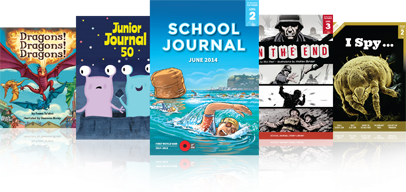
- Gold
- Purple
- 2
- 1
- 3
- 3
- 1
- 2
- English
- Science
- Social Sciences
- Health and Physical Education
- Technology
- The Arts
- Non-fiction
- Fiction
- None
- Articles
- Stories
- Plays
- Poems
Search results
80 items - Showing 31 - 40
-
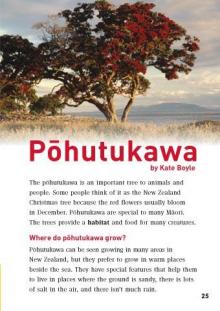
Pōhutukawa
by Kate Boyle
This article explores different aspects of this New Zealand tree, including a description of its preferred habitat, the special features that help it survive, the creatures that live in or on it, and the significance it has for Māori. Students also learn that pōhutukawa are in danger from people and from possums – these trees need help to survive.
Gold 1
-
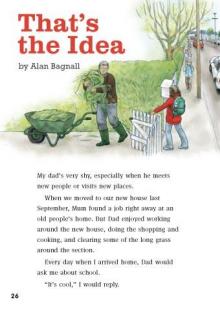
That's the Idea
by Alan Bagnall
Shannon’s dad is very shy. When the family moves, he is happy to work around the house. Inspired by the garden project at Shannon’s school and a section that needs clearing, Dad finds friends and a way to belong in his community. He even finds a new job. This story has themes of sharing and belonging.
Gold 2
-
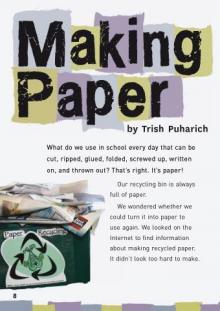
Making Paper
by Trish Puharich
“Making Paper” describes how a class turned waste paper into an interesting, new kind of paper. This example of a procedural text includes explanations and is well supported with photos. It requires students to “confidently use a range of processing and comprehension strategies to make meaning from and think critically about” text (from The Literacy Learning Progressions, page 14).
Gold 2
-
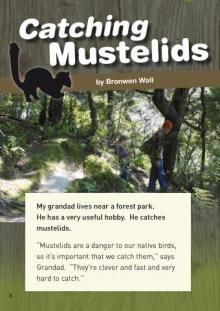
Catching Mustelids
by Bronwen Wall
This report, told from the perspective of a young girl, describes how and why her grandad catches mustelids (ferrets, stoats, and weasels). The theme of predators continues in the poem “ Hoiho” in the same Journal, providing an opportunity for students to integrate ideas from both texts. A third text in this Journal, “A New Home for Mokomoko”, continues the theme of protection of native wildlife.
Gold 1
-
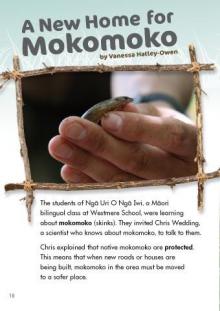
A New Home for Mokomoko
by Vanessa Hatley-Owen
When a class from Westmere School find out that mokomoko (skinks) are a protected species, they decide to build a mokomoko refuge. This recount describes the process and provides information about mokomoko and their survival needs. It provides opportunities for students to practise identifying and summarising main points, about both the process and mokomoko.
Gold 1
-
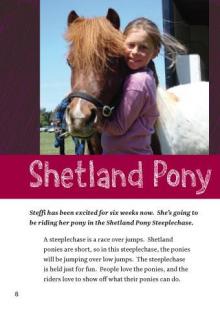
Shetland Pony Steeplechase
by Jane Buxton
This recount, focusing on Steffi’s participation in a steeplechase, captures the excitement and pleasure of riders and spectators. It describes what a steeplechase is and how the riders prepare for the race, and it then gives an exciting account of the race itself.
Gold 1
-
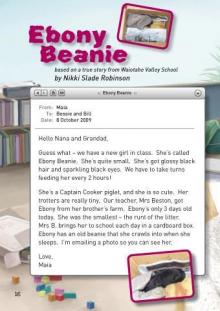
Ebony Beanie
by Nikki Slade Robinson
In this series of humorous emails to her grandparents, Maia describes the antics of a Captain Cooker piglet that her teacher has brought to school. As well as making connections to their own experiences of raising pets or to texts about pets, students can use this text as a model for writing about personal experiences.
Gold 1
-
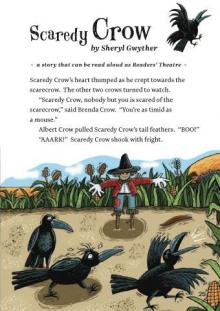
Scaredy Crow
by Sheryl Gwyther
In this narrative, told mainly through dialogue, Scaredy Crow is teased by the other crows because he is frightened of the scarecrow. Three mice come to his aid, and together, they devise a plan to trick the bully crows and teach them a lesson, but there is a surprising twist at the end of the tale.
Gold 1
-
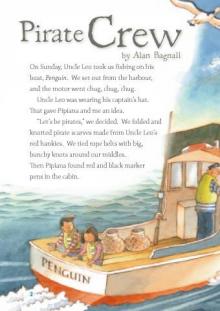
Pirate Crew
by Alan Bagnall
illustrations by Philip Webb
Pipiana and her brother pretend to be pirates when their uncle takes them out fishing. But when the boat breaks down, they have to quickly become mechanics. The theme of water safety underlies this otherwise light-hearted text. The humour at the end could elude some students if they can’t follow the shift from pirate story to mechanic story and back again.
Gold 2
-
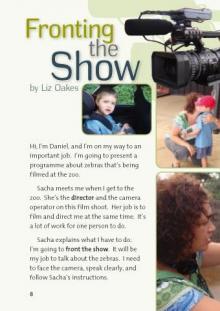
Fronting the Show
by Liz Oakes
Daniel has a special job – fronting a programme about zebras. In this first-person recount, he explains what he has to do and how he feels as a result. The event takes place in a zoo, but the focus of the text is on the filming process.
Gold 1







 Literacy Online home
Literacy Online home
